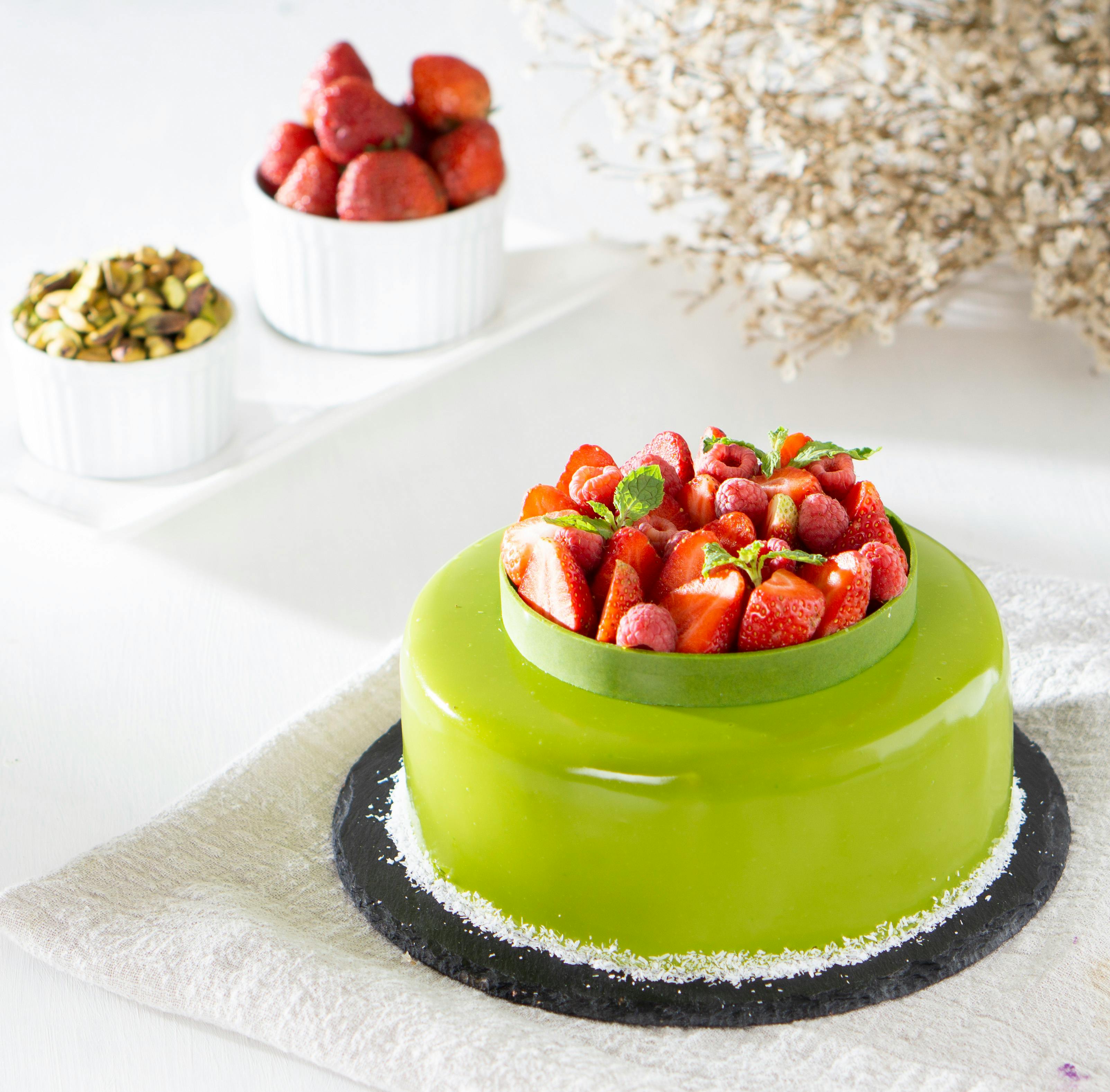Strawberry plants are a delicious and nutritious addition to any garden, but unfortunately they can attract ants. These unwelcome visitors can damage the fruit and even spread diseases, so knowing how to keep ants away from strawberry plants is essential for any gardener. There are a number of methods you can use to deter ants from your strawberry patch, including using natural insect repellents and creating physical barriers around the plants. In this article, we will explain how to keep ants away from strawberry plants so that you can enjoy a bountiful harvest this season.Growing strawberry plants has many benefits. One of the main advantages is that they are easy to care for and require minimal maintenance. Additionally, strawberries are full of antioxidants and vitamins which make them a great choice for a healthy snack. Growing your own strawberries at home is also much more economical than buying them from the store. Strawberries are also known to attract beneficial insects to your garden, which can help to protect other plants from pests. Finally, growing strawberry plants can also be a great activity for children as they learn about gardening and appreciate their hard work in harvesting the fruits of their labor.
Identifying Ants in Strawberry Plants
Ants are one of the most common pests that can affect strawberry plants. It is important to identify and control ants in order to protect your strawberry plants from damage. In order to identify ants in strawberry plants, it is important to inspect the plant closely for signs of ant activity. Ants will often leave behind small piles of dirt or sand near the base of the plant, as well as around the roots. They may also leave trails or tunnels near the base of the plant.
If you suspect that ants are present in your strawberry plants, it is important to take a closer look at them. Ants can range in size from very small (1/16 inch) to large (1/4 inch). Their color can vary from light yellow or tan to black or dark brown. You may also be able to see their antennae and legs if you look closely enough.
Once you have identified that ants are present in your strawberry plants, it is important to take steps to control them. One way to do this is by using ant bait traps. These traps contain food that attracts ants and a chemical that kills them when they ingest it. You can also use insecticidal sprays or dusts on your strawberry plants if necessary. Be sure to read and follow all label instructions carefully when using any type of pesticide on your plants.
Finally, it is important to practice good cultural practices when growing strawberries in order to keep ants away from your plants. This includes keeping weeds down, removing debris from around the base of the plant, and watering only when necessary. By following these steps, you can help ensure that your strawberries stay healthy and free from ant infestations!
Preventing Ants from Entering the Garden
Ants can be a nuisance in your garden, and they can damage your plants if left unchecked. Fortunately, there are some simple steps you can take to help prevent ants from entering your garden.
One of the easiest ways to keep ants out of your garden is to create physical barriers between them and your plants. A layer of mulch or gravel around the base of your plants can help create a barrier that ants won’t be able to cross. Additionally, you can use sticky substances such as Vaseline or Tanglefoot to create an impermeable barrier around the base of your plants.
You can also use natural deterrents such as cayenne pepper or cinnamon to repel ants from entering your garden. Sprinkle these substances on the ground around the perimeter of your garden or on any ant trails that you may have noticed. You may also want to try using coffee grounds or citrus peels as natural deterrents.
Finally, it’s important to make sure that there is no food source in or around your garden that could attract ants. Make sure all trash is disposed of properly and remove any fallen fruit or debris from around the area. Additionally, make sure you water only in areas where water isn’t likely to pool and attract ants, and keep any pet food away from the area as well.
By following these simple steps, you should be able to keep ants out of your garden and protect your plants from damage caused by these pesky insects.
Getting Rid of Ants Already in the Garden
Getting rid of ants already in the garden can be a tricky process. The first step is to identify the type of ant that is inhabiting your garden. Different types of ants require different removal methods, so it is important to know what kind you are dealing with. Once you have identified the type of ant, you can begin to implement a plan for removal.
In most cases, baiting is an effective way to get rid of ants already in the garden. There are many types of bait available, and you may need to experiment with a few different ones before finding one that works best for your particular situation. Placing bait near ant trails and nesting sites is key for successful ant baiting.
Another method for getting rid of ants already in the garden is using insecticides or other chemical treatments. Insecticides can be purchased at your local gardening store or online and come in both liquid and granular forms. When using chemical treatments, it is important to carefully read and follow all instructions on the label, as improper use could cause harm to plants or other organisms living in your garden.
Physical removal may also be necessary if other methods fail. This includes manually removing any visible nests or trails, as well as digging up soil around those areas to disrupt any further development. You can also set traps by placing small dishes filled with soapy water near ant trails; this will drown out any ants that enter them.
Finally, prevention is key for keeping ants out of your garden in the future. Make sure there are no food sources available in your yard (such as pet food or fallen fruit), keep vegetation trimmed back from structures, and seal any potential entry points into buildings or other structures on your property. Following these simple steps will help keep unwanted pests away from your garden.
Using Natural Repellents to Keep Ants Away
Ants can be a nuisance and can quickly become an infestation in and around the home. Fortunately, there are a number of natural repellents available that can help to keep ants away. Some of the most effective natural repellents include using essential oils such as peppermint oil, lemon or orange peels, and vinegar.
Essential oils are an excellent choice for natural ant repellent because they have a strong smell that ants find unpleasant. Peppermint oil is one of the most commonly used essential oils for ant repellent because it has a strong scent that ants do not like. To use peppermint oil as a natural repellent, simply add a few drops to cotton balls and place them around areas where you have seen ants. Alternatively, you can mix peppermint oil with water in a spray bottle and use it to spray around entry points such as windowsills or doorways.
Lemon and orange peels are also known to be effective against ants because their strong citric acid smell repels them. To use this type of natural ant repellent, simply take the peels of these fruits and place them near ant trails or entry points into the home. This will help to deter the ants from entering the home.
Vinegar is another great natural ant repellent that works well against ants because of its acidic smell. To use vinegar as an effective ant repellent, simply mix white vinegar with water in equal parts, then spray it around entry points into your home such as windowsills or doorways. You can also pour some vinegar directly onto ant trails to discourage them from entering your home.
By using these simple yet effective natural repellents, you can help to keep your home free from pesky ants without having to resort to harsh chemical pesticides or other methods that may be harmful for your family and pets.

Applying Insecticidal Soap to Get Rid of Ants
Ants can be a nuisance in any home or garden. They’re resourceful little creatures, often entering through tiny cracks and crevices, and they can be difficult to get rid of. Insecticidal soap is an effective way to get rid of ants without using harsh chemicals. It works by smothering the ant’s exoskeleton, causing them to dry out and die.
Insecticidal soap is available from most garden centers and nurseries, or you can make your own at home. To make your own insecticidal soap, mix equal parts of liquid dish soap and water in a spray bottle. Shake the bottle vigorously to mix the solution together before use. You can also add a few drops of essential oils such as peppermint or eucalyptus for added effectiveness against ants.
Once you have your insecticidal soap ready, it’s time to apply it to the ants’ trail. Spray the mixture liberally along the path where you see ants traveling, making sure to get into any cracks or crevices where they may be hiding. You may need to reapply every few days until you no longer see any ants in the area.
Insecticidal soap is an effective way to get rid of ants without using harsh chemicals that could be harmful to your family or pets. It’s important to follow the instructions on the label when using any insecticide and wear protective clothing if necessary when applying insecticidal soaps outdoors. With regular use, this method should help keep your home ant-free for good!
Using Traps and Baits to Catch Ants
Catching ants can be a tricky task and requires setting up the right traps and baits. To get started, it is best to identify the type of ant that is in your home. Different species of ants will require different types of traps for effective extermination. Once the type of ant has been identified, one can begin to set up traps or use baits to catch them.
Traps are an effective way to catch ants as they will be drawn to the food placed within them. Traps should be placed near ant trails or areas where ants have been seen in order to ensure that they are attracted to them. The bait used should be something that will attract the particular species of ant and it should also be non-toxic so that it does not pose any risk to people or pets.
Baiting is another method for catching ants that involves luring them with a food source outside of their usual habitat. This method is particularly useful when trying to eliminate large colonies of ants as it will draw all of them away from their nest, making them easier to catch. The bait should be placed near ant trails or areas where they have been seen in order for it to be effective.
When using either traps or baits, one should also make sure to thoroughly clean up any spilled food sources or crumbs as these can also attract more ants into the area. Additionally, all entry points should be sealed off as this will help prevent new colonies from forming in your home. With proper preparation and execution, one can effectively use traps and baits to catch and eliminate any unwanted ant infestations in their home.
Using Chemical Repellents to Keep Ants Away
Ants can be a nuisance, so it’s important to know how to keep them away from your home. One of the most effective methods of ant control is to use chemical repellents. Chemical repellents are available in a variety of forms, including sprays, granules, and baits.
Sprays are the most common form of chemical repellent and can be used both indoors and outdoors. When using sprays, make sure to spray around all potential entry points, such as windowsills and door frames. It’s also important to use caution when spraying inside your home as some chemicals can be toxic if inhaled or ingested.
Granules are a great option for outdoor use as they are less likely to cause harm if they come into contact with people or pets. Granules can be spread around the perimeter of your home or in areas where ants are known to nest.
Baits are another effective method for controlling ants. Baits contain food that attracts ants, but also contains an insecticide that kills them when they ingest it. Baits should only be used outdoors and should be placed in areas where ants are known to congregate, such as along fence lines or near garbage cans.
Using chemical repellents is an effective way to keep ants away from your home. However, it’s important to follow the directions on the product label carefully and use caution when using any type of chemical indoors. Additionally, if you have pets or children in the home, make sure they do not come into contact with any chemicals you may be using for ant control.

Conclusion
Ants can be a real nuisance for strawberry plants. They can damage the plants and their fruit, without any knowledge of the gardener. To keep ants away from strawberry plants, various methods can be used. These include using insecticides, creating physical barriers around the plant, using mulch to block their entry and making use of natural repellents like vinegar or peppermint oil. All of these methods are safe and effective in keeping ants away from your strawberry plants.
No single method is guaranteed to work on its own, so it is best to combine several different methods to protect your strawberry plants from ants. With a little bit of effort, you can ensure that your strawberry plants are free from ant infestations and enjoy all the sweet fruits they bring!



